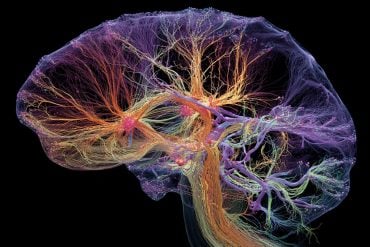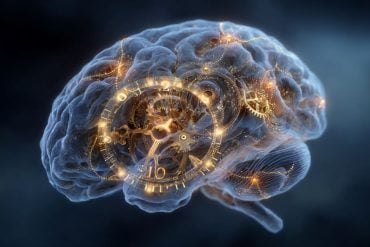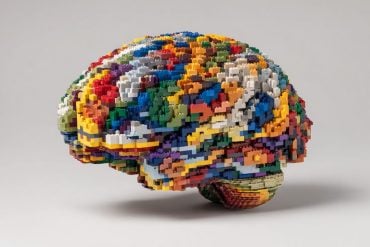Summary: Researchers leveraged model-based methodologies to identify two crucial brain circuits implicated in consciousness.
The scientists analyzed signal propagation in models of patients’ brains with disorders of consciousness (DoC). They identified two key circuits – one in the posterior cortical region and another in the thalamo-frontotemporal region.
This breakthrough paves the way for enhanced diagnosis and potential treatment options for patients with DoC.
Key Facts:
- This study focuses on two categories of DoC: unresponsive wakefulness syndrome and minimally conscious state.
- The research team analyzed functional MRI data from each patient during the resting state to evaluate personalized brain connectivity and signal propagation patterns.
- The findings revealed distinctive brain network activities in patients with unresponsive wakefulness syndrome and those in a minimally conscious state. These differences could help clinicians understand information exchange in the brain and seek ways to reactivate impaired circuits.
Source: Human Brain Project
Researchers of the Human Brain Project have used a model-based approach to identify the brain circuits implicated in consciousness.
The results of the study, a collaboration between Pompeu Fabra University in Barcelona and University of Liège, have been published in the journal Human Brain Mapping.
The team studied the propagation of signals in models of the brain of patients with disorders of consciousness (DoC), identifying two relevant circuits in the posterior cortical region and the thalamo-frontotemporal region.
The results bring more understanding of the inner workings of brain networks and could improve diagnosis and even provide treatment targets for people suffering from DoC.
Currently, patients with DoC are classified in several categories (coma, unresponsive wakefulness syndrome and minimally conscious state) which describe their overall consciousness and awareness.
“The diagnosis is mainly response-based: the doctor sits down with the patient and assesses their response to stimuli” explains Jitka Annen from the University of Liège.
“However, this may not correspond to their underlying brain activity – patients with high activity may still be unable to react. It’s a heterogenous group. We wanted to go a step beyond assessment and classification based on neuroimaging and instead look at the flow of information in their brains, to find common patterns associated with consciousness”.
The researchers focused on two DoC groups – unresponsive wakefulness syndrome (previously known as vegetative state) and minimally conscious state.
After collecting fMRI data from each patient during resting state (i.e., patients were awake but no particular task was provided), they looked at spontaneous and model-based perturbation of brain activity captured by the blood flow, such as signals and peaks.
“Based on spontaneous peaks of activity, we evaluated the personalised connectivity of each patient’s brain, which can tell us how likely a signal is to travel from one point to the other” says Gorka Zamora-López from Pompeu Fabra.
“After we constructed a patient-specific computational model of their propagation patterns, we then trigger a signal in the model and see how the brain reacts.
“In particular we look for which areas are more likely to respond to a signal; which areas are more likely to propagate it. Basically, we look at whether an area acts as influencer or influenced”.
A marked distinction arises between the unresponsive wakefulness syndrome group and minimally conscious state group, with the former not displaying activity in identifiable circuits.
“The key difference is that in patients with unresponsive wakefulness syndrome no region of the brain seems embedded in a functional network, they all display equally low activation.
“Meanwhile, distinct regions and circuits pop out in the brain models of people in minimally conscious state: the thalamo-frontotemporal region when broadcasting signals, and the posterior cortical region when receiving them” adds Rajanikant Panda of the University of Liège.
These findings shed new light on disorders of consciousness, and could lead to a more defined understanding of the mechanisms based on brain activity rather than behavioral responses.
“I believe these results can potentially guide the clinicians to better understand what is going wrong in the information exchange and thus look for ways to reactivate those circuits” concludes Zamora-López.
About this consciousness and brain mapping research news
Author: Peter Zekert
Source: Human Brain Project
Contact: Peter Zekert – Human Brain Project
Image: The image is credited to Neuroscience News
Original Research: Open access.
“Whole-brain analyses indicate the impairment of posterior integration and thalamo-frontotemporal broadcasting in disorders of consciousness” by Jitka Annen et al. Human Brain Mapping
Abstract
Whole-brain analyses indicate the impairment of posterior integration and thalamo-frontotemporal broadcasting in disorders of consciousness
The study of the brain’s dynamical activity is opening a window to help the clinical assessment of patients with disorders of consciousness.
For example, glucose uptake and the dysfunctional spread of naturalistic and synthetic stimuli has proven useful to characterize hampered consciousness. However, understanding of the mechanisms behind loss of consciousness following brain injury is still missing.
Here, we study the propagation of endogenous and in-silico exogenous perturbations in patients with disorders of consciousness, based upon directed and causal interactions estimated from resting-state fMRI data, fitted to a linear model of activity propagation.
We found that patients with disorders of consciousness suffer decreased capacity for neural propagation and responsiveness to events, and that this can be related to severe reduction of glucose metabolism as measured with [18F]FDG-PET.
In particular, we show that loss of consciousness is related to the malfunctioning of two neural circuits: the posterior cortical regions failing to convey information, in conjunction with reduced broadcasting of information from subcortical, temporal, parietal and frontal regions.
These results shed light on the mechanisms behind disorders of consciousness, triangulating network function with basic measures of brain integrity and behavior.








